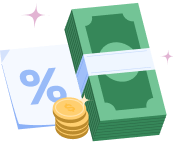Table of Contents
Facing a mountain of debt is a reality for millions of Americans. Credit cards, student loans, auto payments, and personal loans can quickly pile up, leaving many overwhelmed and unsure where to start. Fortunately, two popular strategies—the debt snowball and the debt avalanche—have helped countless people regain control of their finances and achieve debt freedom. But which method is right for you?
This comprehensive guide will break down both approaches, compare their strengths and weaknesses, and help you choose the best path to financial freedom.
Understanding the Debt Crisis in America
Debt is a defining feature of the modern American financial landscape. As of 2025, U.S. household debt has reached record highs, with the average American carrying over $6,000 in credit card debt alone. Student loans, auto loans, and mortgages add to the burden, making effective debt management more crucial.
The consequences of unmanaged debt are more than just financial. Studies show that high debt levels can lead to stress, anxiety, and even health problems. That’s why having a clear, actionable repayment strategy is essential—not just for your wallet, but for your overall well-being.
Read related blog: How to Create a Debt Payoff Plan That Works
What Is the Debt Snowball Method?
The debt snowball method is a debt repayment strategy popularized by financial expert Dave Ramsey. Its core principle is simple: focus on paying off your smallest debts first, regardless of interest rate, while making minimum payments on all other debts.
How the Debt Snowball Works:
- List all your debts from smallest to largest balance.
- Make minimum payments on every debt.
- Put any extra money toward the smallest debt.
- Once the smallest debt is paid off, roll its payment into the next smallest debt.
- Repeat the process until all debts are gone.
Example:
Suppose you have three debts:
- $500 credit card
- $2,000 personal loan
- $5,000 student loan
With the snowball method, you’d first pay off the $500 credit card. Once that’s gone, you’d tackle the $2,000 personal and $5,000 student loans.
Psychological Benefits:
The primary advantage of the snowball method is motivation. Paying off smaller debts quickly gives you a sense of accomplishment and momentum, making it easier to stick with your plan. Many people find these “quick wins” crucial for maintaining enthusiasm and discipline throughout the debt repayment journey.
Read related blog: Smart Strategies to Pay Off Credit Card Debt Faster
What Is the Debt Avalanche Method?
The debt avalanche method takes a more mathematically optimized approach. Instead of focusing on the smallest balance, you prioritize debts with the highest interest rates. This strategy is designed to save you the most money over time by minimizing the total interest paid.
How the Debt Avalanche Works:
- List all your debts from highest to lowest interest rate.
- Make minimum payments on every debt.
- Put any extra money toward the debt with the highest interest rate.
- Once that debt is paid off, move to the next highest interest rate.
- Continue until all debts are paid off.
Example:
Using the same debts as before:
- $500 credit card at 20% APR
- $2,000 personal loan at 10% APR
- $5,000 student loan at 5% APR
With the avalanche method, you’d pay off the $500 credit card first (since it has the highest rate), then the $2,000 personal loan, and finally the $5,000 student loan.
Financial Benefits:
The avalanche method is the clear winner when it comes to saving money. By attacking high-interest debts first, you reduce the total interest paid and can potentially pay off all your debts faster—assuming you stick to the plan.
Read related blog: Should You Use a 401(k) Loan to Pay Off Credit Card Debt?
Debt Snowball vs. Debt Avalanche: Key Differences
| Feature | Debt Snowball | Debt Avalanche |
| Priority | Smallest balance first | Highest interest rate first |
| Main Benefit | Motivation, quick wins | Saves money on interest |
| Main Drawback | Pays more in interest overall | May take longer to see progress |
| Best For | Those needing motivation | Those focused on financial savings |
| Psychological Impact | High (quick wins) | Lower (delayed gratification) |
The key distinction is psychological versus financial optimization. The snowball method is about building momentum and motivation, while the avalanche method is about minimizing costs. Both strategies are effective, but the best choice depends on your personality and priorities.
Read related blog: Pay Off Debt With Beem’s Personal Loans to Boost Your Credit Score
Pros and Cons of Each Method
Debt Snowball Pros
- Quick psychological wins: Paying off small debts quickly boosts morale and motivation.
- Simplicity: The method is easy to understand and implement.
- Momentum: Each paid-off debt frees up cash flow for the next target, creating a “snowball” effect.
Debt Snowball Cons
- More interest paid: You may pay more over the life of your debts, especially if larger balances have higher rates.
- Not mathematically optimal: The method doesn’t focus on minimizing the total cost.
Debt Avalanche Pros
- Saves money: You reduce the total interest paid by targeting high-interest debts.
- Faster overall payoff: You’ll often become debt-free sooner than with the snowball method.
- Financial efficiency: The approach is mathematically sound and ideal for those focused on long-term savings.
Debt Avalanche Cons
- Slower progress: It may take longer to pay off your first debt, which can be discouraging.
- Requires discipline: Some lose motivation and abandon the plan without early wins.
Read related blog: How to Avoid Common Debt Repayment Mistakes
Real-Life Examples and Case Studies
Let’s look at two hypothetical individuals—Sarah and Mike—each with the following debts:
- $1,000 credit card at 18% APR
- $3,000 personal loan at 8% APR
- $7,000 student loan at 5% APR
Sarah chooses the Debt Snowball:
She pays off the $1,000 credit card first. It takes her three months, and she feels a sense of accomplishment. She then rolls that payment into the $3,000 personal loan and attacks the $7,000 student loan.
Mike chooses the Debt Avalanche:
He pays off the $1,000 credit card first (since it has the highest rate), but then focuses on the $3,000 personal loan (8% APR), and finally the $7,000 student loan (5% APR).
Results:
- Sarah feels motivated early on, but pays slightly more in interest over the life of her debts.
- Mike saves about $200 in interest and finishes his repayment plan two months earlier, but finds it harder to stay motivated since his progress feels slower after the first debt.
Visualizing the Difference:
A simple chart or calculator can help you see how much time and money you could save with each method, based on your debt balances and interest rates.
Read related blog: Can You Pay Off A Personal Loan Early?
How to Choose the Best Method for You
There’s no one-size-fits-all answer. Here are key factors to consider:
- Personality and Motivation: Do you need quick wins to stay motivated, or are you disciplined enough to stick with a plan for the long haul?
- Types and Sizes of Debts: If most of your debts have similar balances, the difference between methods may be negligible. The avalanche method could save a lot if you have one large, high-interest debt.
- Financial Goals: Do you focus on minimizing interest or value psychological momentum?
- Ability to Stick to a Plan: If you’ve struggled with debt repayment, the snowball method’s early wins may help you stay on track.
Decision Flowchart:
- If you need motivation, → Try the Debt Snowball.
- To save the most money, → Try the Debt Avalanche.
- If you’re somewhere in between → Consider a hybrid approach.
Can You Combine Both Methods?
Absolutely. Many people start with the debt snowball for its motivational boost and switch to the avalanche once they’ve gained momentum. Others may use a hybrid approach, such as paying off a few small balances first and then focusing on the highest-interest debts.
This flexibility is key: the best method is the one you’ll stick with. Don’t be afraid to adjust your strategy as your situation or mindset changes.
Read related blog: The Impact of Medical Debt on Your Credit Score
Additional Tips for Successful Debt Repayment
- Budgeting is essential: Track your income and expenses to free up as much money as possible for debt repayment.
- Avoid new debt: Don’t undo your hard work by adding new balances. If necessary, cut up credit cards or freeze them in a block of ice!
- Automate payments: Set up automatic transfers to ensure you never miss a payment.
- Celebrate milestones: Reward yourself (responsibly) when you pay off a debt to stay motivated.
- Consider consolidation: If you have multiple high-interest debts, consider consolidating them into a single, lower-interest loan.
- Seek support: Talk to a financial advisor or join a debt support group if you feel overwhelmed.
FAQs on Debt Snowball vs. Debt Avalanche: Which Method Wins?
What if my smallest debt also has the highest interest rate?
That’s ideal—both methods agree that you should pay it off first, giving you a quick win and maximizing interest savings.
Can I switch methods if one isn’t working?
Yes, you can switch between snowball and avalanche at any time. The best strategy is the one you’ll stick with, so feel free to adjust as your motivation or financial goals change.
How do these methods compare to debt consolidation?
Debt consolidation combines multiple debts into one, often with a lower interest rate. You can still use the snowball or avalanche approach to pay off the consolidated debt more efficiently.
What about variable-rate debts?
If a debt’s interest rate changes and becomes your highest, prioritize it using the avalanche method. Review your debts regularly and adjust your strategy as rates shift.
Conclusion: Which Method Wins?
When it comes to the debt snowball vs. debt avalanche debate, the real winner is the method you stick with. Both strategies have helped millions of Americans break free from debt, but what matters most is taking action and staying consistent.
If you thrive on quick wins and need motivation, the debt snowball might be your best bet. If you’re laser-focused on saving money and can stay disciplined, the debt avalanche could be the more intelligent choice. Remember, you can always start with one approach and switch if your needs change.
If you’re looking for a modern way to track your progress, consider using a financial app like Beem. This app helps you visualize your debt payoff journey and stay motivated every step of the way. Download the app now!
















































